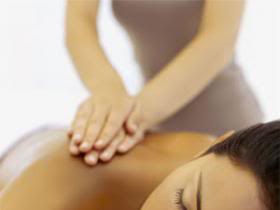HOW TO MAKE A CASTOR OIL PACK
by Dr. Kelly Rybicki
Many of us are familiar with the grandmother references to taking castor oil for prevention and as a cure all for many health ailments. There is not much documented research on the efficacy of castor oil for health conditions. However, there is much anecdotal evidence to support using castor oil as a innocuous and possibly helpful external application for reducing inflammation and reducing pain. Castor oil is a unique fatty acid, a monounsaturated, 18 carbon fatty acid with a high amount of ricinoleic acid.
Castor oil has been suggested to help: arthritis, chronic joint and muscle pain, improve lymphatic flow, stimulate the immune system and to relieve constipation.
Over my 20 years as a practicing chiropractor, I have recommended this innocuous treatment to try and help my patients reduce their musculoskeletal inflammation, with favorable results. It is a home remedy which is inexpensive, recyclable and generally without side effects (although one should always do a sensitivity test by applying a small amount of castor oil to the skin and monitor for allergic reactions to the oil).
MAKING A CASTOR OIL PACK:
Supplies:
1) Cold pressed, preferably organic, castor oil
2) Hot water bottle or moist heating pad
3) Plastic wrap
4) Three squares (depending on size of area you want to cover) of cotton flannel or towel
5) Old towel
6) Tupperware to keep castor oil soaked squares in
* Soak squares in castor oil until they are saturated
* Place three soaked squares on body part, cover with plastic wrap
* Put hot water bottle/heating pad on top of plastic wrap, cover with old towel
* Leave on 30-60 minutes. Depending on problem, treat daily for 3 days to 2 weeks
* Store squares in Tupperware after every use
* When oil’s color changes and/or the oil smells rancid, replace oil
For conditions such as forearm tendonitis, place squares over forearm muscles and insertions. For low back conditions, place squares over back area affected. For arthritis of the knee, wrap squares around the front, sides and back of the knee. ETC….

